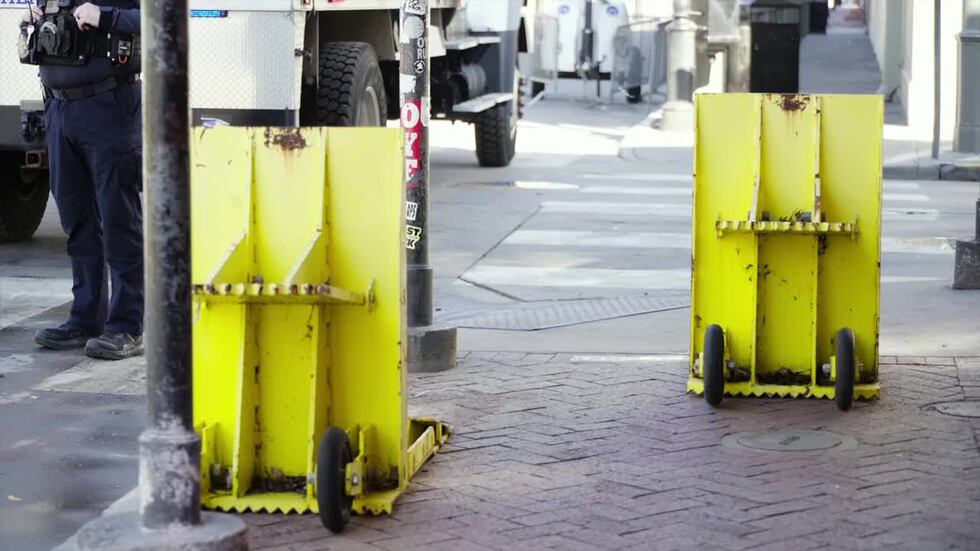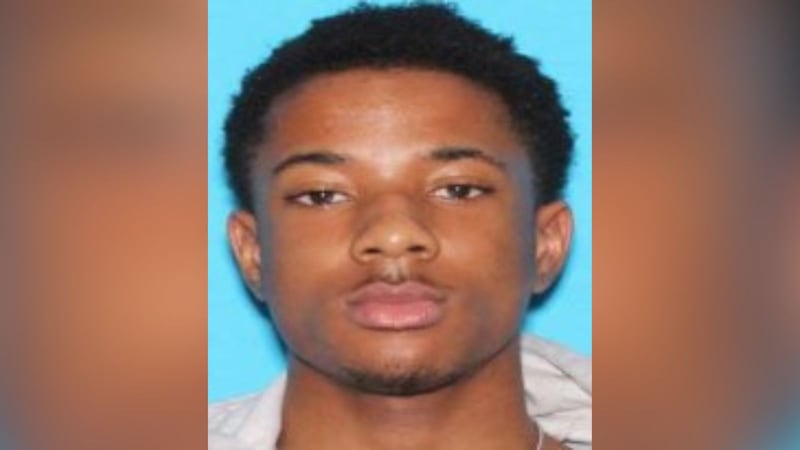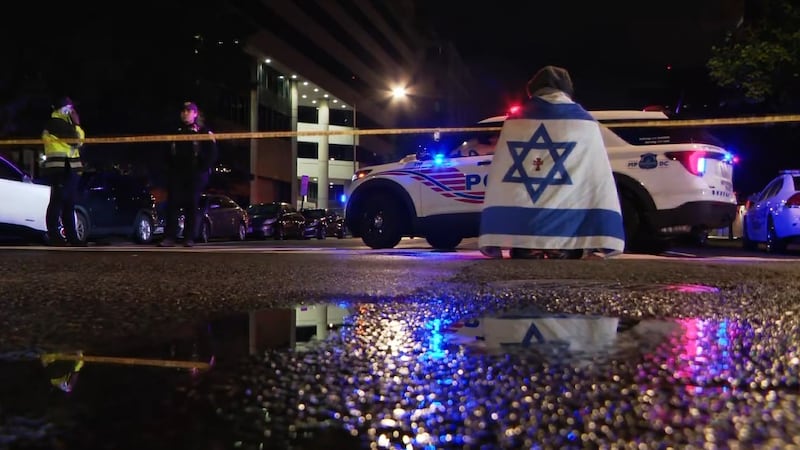Sidewalk barriers set up after New Orleans terror attack were already in city, not used New Year’s
Placement, condition of security barriers on Bourbon Street had been discussed for years
(InvestigateTV) — Immediate changes are already visible on Bourbon Street just days after a man drove a truck into the crowds of the French Quarter.
Sidewalks on Bourbon Street are now protected by portable, 700-pound steel “Archer” barriers that the City already had in its possession.

New Orleans Police Superintendent Anne Kirkpatrick said she was unaware of these barriers prior to the early morning January 1 attack.
“I didn’t know about them, but we have them. And so we have been able now to put them out,” the Superintendent said.
InvestigateTV found news coverage indicating the city has used the movable barriers for major events such as Mardi Gras as far back as 2017 — but they were not deployed in the Quarter ahead of this New Year’s Eve or as part of 2025 Sugar Bowl security measures.
Test video from the manufacturer shows the barriers can effectively stop a truck in its tracks.
They can now be seen on the same sidewalk where during the early morning attack the terrorist drove around the patrol car blocking Bourbon Street in place of the regular bollard barricades that are in the process of being replaced.
Beleaguered Barriers
Installation of bollards at Bourbon’s intersections began in late 2017, and by April 2018, the devices were being put in place nightly to block vehicle access to the popular pedestrian destination.
According to a commissioner for the French Quarter Management District —(FQMD), the bollards cost $60,000 per set — and started to fail within six months of installation.
The FQMD was created by the state legislature in the wake of Hurricane Katrina and charged with protecting and strengthening the vital tourism driver.
Commission records show the FQMD has been grappling with pedestrian safety and the use of bollards for years, but board chair Jane Cooper said that as an istrative body, the commission is not equipped to physically handle the movement of barricades each day.
“We do not employ personnel that actually do work on a functional basis. We need to partner with the city, and we need a partner with other organizations like NOPD, like the sheriff’s department, like Troop Nola, to accomplish our objectives,” she said. “And so we’ve had discussions about all of these things over the years as it relates to public safety.”
In 2019, as part of a commissioned comprehensive security assessment of the Quarter, commissioners recommended the city make repairs to the bollard system because of the failures that had begun to manifest almost immediately.
According to board meeting minutes reviewed by InvestigateTV, there were concerns about the bollard system itself — but also an ongoing staffing struggle over who was locking them into place each night.
In a Jan. 2019 report from the then-chair, state police and homeland security were not positioning and locking Quarter bollards despite requests to, and the city asked if the FQMD would consider taking on that responsibility.
This was met with concerns about liability, with one commissioner saying the bollards were “not a good system.”
News coverage and reports from the Mayor’s office show an assessment and some repair of the bollards took place along with repaving of certain segments of Bourbon Street in 2019.
Yet, FQMD documents show the problems continued — as did the debate about who was responsible for them.
In December 2021, the FQMD Security and Enforcement Committee set one of its 2022 goals as “Understand who manages the bollards on Bourbon Street and the traffic barricades on Royal Street and work with them to make them operational or remove them.”
However, the city did not put out bids for the replacement of the broken bollards until 2024, and the work is still underway to complete the project — the goal being to have them fully in place by the Super Bowl next month.
Documents indicate the bollards are officially the maintenance responsibility of the Department of Public Works and in 2022 were pulled into the department’s city-wide bollard improvement efforts.
This “bollard task force” spent more than a year working with the city’s contracted engineer to come up with a plan for removing and replacing the bollards, with the final project given $5.4 million in capital funding.
FQMD commissioners regularly asked for updates as the city put together a plan for the bollards, with of the Security and Enforcement Committee, in particular, growing frustrated as the months ed.
One member alleged that “the City has not been managing the pedestrian malls well for years.” Another said, “the bollards have been an issue for three years and their damaged condition makes the French Quarter look trashy.”
Cooper said the FQMD plans to further analyze security measures in the wake of this week’s tragedy.
“I think in an ongoing scrutiny of that construction project and assurances that it will be completed and functional are important to FQMD and should be important to everyone that loves the French Quarter,” she said.
State Official Promising Reform
InvestigateTV ed the City of New Orleans to ask about the years of back and forth with FQMD, as well as whether the Archer barriers installed Thursday had been available for use, but not deployed.
The mayor’s spokesperson responded and deferred to the FBI, stating in an email, “The FBI is the lead on the investigation and all inquiries should go through them at this time.”
Meanwhile, Louisiana Lieutenant Governor Billy Nungesser had already proposed that the state take over maintenance of the French Quarter from New Orleans before the attack.
“You wouldn’t have stopped it anywhere, but it seems like had we had some of these things in place, it would have minimized the damage and loss of life,” the Lt. Governor said.
Nungesser now wants to see more permanent types of safety measures put into place.
“Some of the poles that could be installed on the sidewalk should be installed permanently. Permanently,” he said. “In other cities, you walk around planters and different things to deter vehicles from harming people. Cement planters.”
Still, Cooper said there is only so much possible prevention.
“Even if they were up, the suspect went up on the sidewalk. An evil person intent on doing evil is going to find a way to it,” she said.
Police Superintendent Kirkpatrick said similarly that the attack was motivated and even Archer barriers may not have stopped an attack from happening in the city: “This is not a matter of pointing blame anywhere. A terrorist is hell bent on destruction. This man was going to do his best. And if it hadn’t been on Bourbon, he was going to go somewhere else. So we have this, we’re going to implement it and end of story.”
Cooper also said it should be noted that the law enforcement and security officers in the Quarter in the early hours of New Year’s Day — some of whom are partially-funded by the FQMD — prevented the assailant from taking even more lives.
“Law enforcement deserves praise for preventing further destruction,” she said.
Copyright 2025 Gray Media Group, Inc. All rights reserved.














